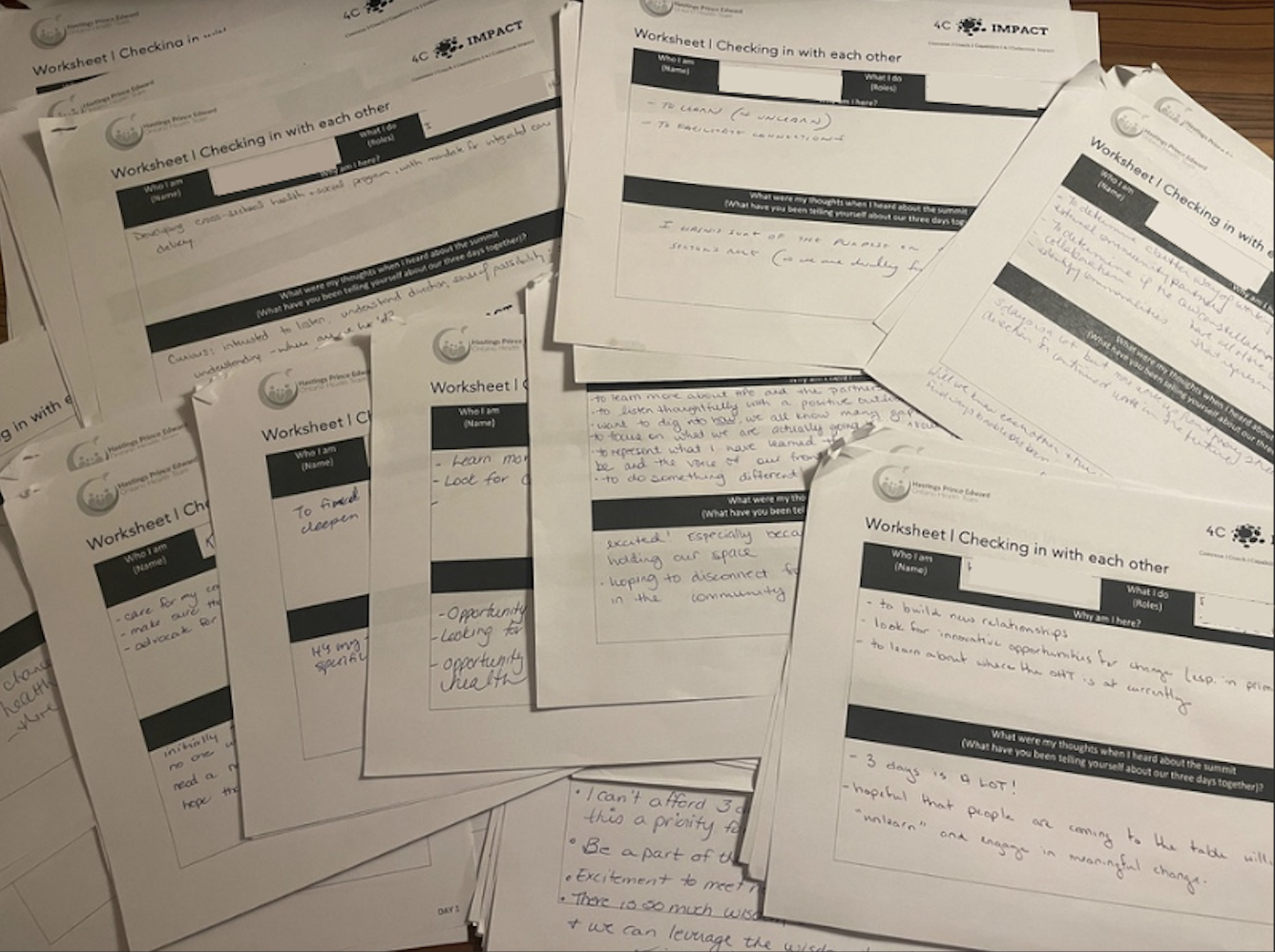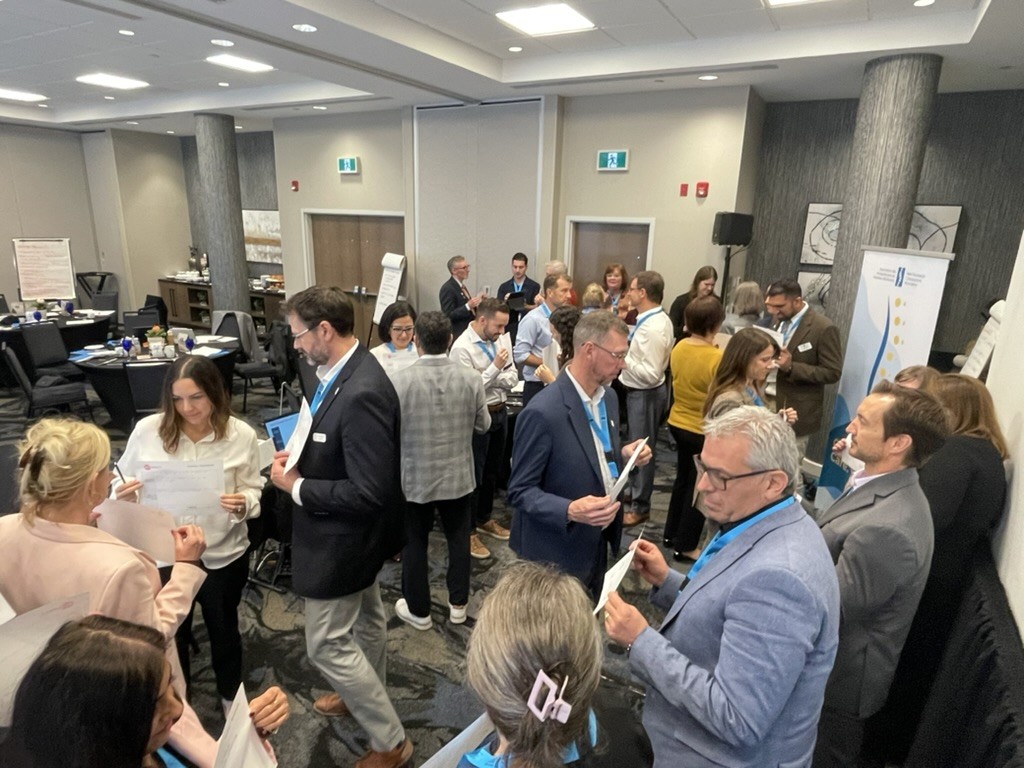We are discovering a shared truth: collaboration is necessary to improve population health outcomes, yet often difficult to reach. The personal desire for working together is strong and absolutely imperative. This is WHY we need to collaborate. What is missing are the enabling conditions that makecollaboration possible and sustainable. When we focus on the HOW, we realize our potential for impact.

Reflection alone does not change systems. What matters is what people and organizations choose to do next.
At the end of every session, we ask two questions:
These questions shift the room from insight to ownership. They invite leaders, clinicians, community partners, and people with lived experience to define tangible next steps—individually and collectively.


Through hundreds of workshops, the patterns are consistent:
● People commit to building new relationships across boundaries.
● Teams identify practices they can stop doing, because it no longer makes sense, in order to make space for collaboration and the actions that make sense to reach population health outcomes.
● Leaders name the skills, resources, or supports they need from colleagues to sustain progress.
Taken together, these commitments create a real-time snapshot of system readiness. They show us not only where there is energy for change, but also where gaps remain and support is needed to carry the work forward.
System transformation is not achieved through policy alone. It advances through the daily choices leaders make—how they show up, who they engage, and what they prioritize.
Commitments reveal both readiness and barriers. They show where there is energy for change, and where additional support is needed. And when commitments are shared openly, they build accountability across organizations and sectors.

Commitments are more than words. They are signals of alignment across system levels:
● Micro — individuals committing to different ways of showing up.
● Meso — organizations adjusting how they work together.
● Macro — sectors and systems aligning priorities for broader impact.
In this way, commitments are not the end of the process but the bridge to integration. They turn learning into action, and action into strategy. When people name and share their commitments, they demonstrate the courage to lead in new power ways—centered on community, shared leadership, and belonging. Commitments close the loop. They show us not only where leaders want to go, but what it will take to get there.
This Insight to Action series has been an invitation to learn together about how conditions for collaboration are built, how barriers can be named and addressed, and how commitments turn intent into action. It will also share insights from our work—insights learned and practiced together.
1. From Insight to Action: Connection Is the Correction — Building the Conditions for Integrated Care
2. The Nervous System of Change — how neuroscience shows us that trust is embodied, not abstract. As Stephen M.R.Covey reminds us, “Change happens at the speed of trust.” And inour work, we see the next layer: trust happens at the speed of thenervous system — across individuals, teams, organizations, and sectors.
3. Elephants that need to be named and addressed to move forward — how unspoken barriers keep systems stuck. Naming them is the first step, but the real work is in identifying whichare within our control to change, and then acting on them.
4. Advancing on the Collaboration Spectrum — what our data tells us about the gap between the collaboration leaders whether as a person with lived experience, aclinician, a community worker or those in formal leadership roles acrosspolicy, research, organizational and sector leadership want and the collaboration they experience. It also highlights where individuals see themselves in their own growth, where their teams and organizations arepositioned, and where they aspire to be.
5. Individual and Collective Commitments — how personal and collective commitments translate insight into measurable action.
To learn more about our collective pursuit and see the upcoming blogs, explore 4CImpact.org orto get in touch with Jodeme (jodeme@4cimpact.org)or Meghan (info@4CImpact.org).
This series was made possible by the 4C Impact team: Jodeme Goldhar, Meghan Perrin, Deb Gollob, and Justin Levinsky (Research Assistant).